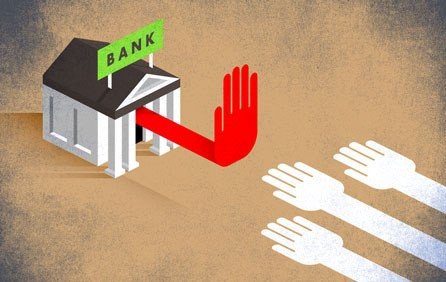How Blockchain Technology can Advance the Construction Industry.

Most people live in a home, most people know somebody who is a part of the home building process, yet so few of us can even begin to grasp the archaic industry that makes this all happen. If I were to tell you that the detailed specs of your new ‘custom home’ were printed on paper and then tossed inside a trailer with the rest of the tools, at some point during construction someone was given important instructions scribbled on a 2x4 scrap, or that it is likely that someone who worked on your home was not paid in-full, if at all, you probably wouldn’t believe me. The truth of the matter is, the construction industry has not evolved much since the release of the pneumatic nail-gun 50 years ago, and the ones paying the price for this outdated system is ‘us’ the consumer.
When people think about the construction process, the idea of tools comes to mind very easily for most. Go to any Home Improvement store and you will see row after row of tools, gadgets, gizmos, and everything else you could possibly imagine someone building a house would need. What has been forgotten is that what is more important is that building a house needs someone. The most important tool in the construction industry is still the PEOPLE! Yet as you stroll the aisles of the Home Improvement store you will notice that the tools are focused on the house and not on the PEOPLE building that house. This disconnect amongst the people in the construction industry, and the people serving the construction industry, is one of today’s furthest reaching economic burdens. Lack of transparency, delayed payments, insufficient and expensive funding, and general inefficiency have long-plagued the construction industry.
The current tools available to the construction industry are primarily focused on the physical efficiency but so few address the mental efficiency that can be gained in one of the world’s largest and most necessary industries. As we have seen in almost every major industry today, increase in COMMUNICATION and the availability of REAL-TIME communication, have played key roles in their growth. Add on the power of a TRANSPARENT, INCORRUPTIBLE, digital financial ledger and contract management system, and we have what I like to call The Future of Construction Efficiency, The Blockchain.
To the unfamiliar, we will run through a quick crash course on the Blockchain and how is works. For those of you in the construction industry, I am sure you are very familiar with spreadsheets. Whether it is organizing subs, projects, payments, or anything else, most of you have used a spreadsheet at some time to keep your work organized. If you wanted to allow someone else to make updates to the spreadsheet you would have to send them a copy and wait for them to return the new version. I don’t think I need to even go into the details of why this is not only inefficient but can lead to version mismatches and conflicts of all sorts. Now imagine being able to share ONE TRUSTED version of this spreadsheet, that can be accessed by all members and only allows the addition of new information, not the updating or deletion of past information that has been recorded. As simple as the system sounds and as complex as the Construction Industry hardships sound, how does this all come together? What the Blockchain can truly provide is a whole new level of accountability and transparency, that only a truly decentralized network of trustless obligations can provide.
Most Builders receive a loan from a bank, creditor, or private equity; the total loan amount is usually around 80% of the total value needed for the completion of the project. Even though this loan has been granted, as well as secured by a lien on real estate, it is usually only accessible to be drawn on once a month at most. The results: the contractors and subcontractors, are forced to fund themselves for at least 30+ days on a project before their invoices can even be submitted. Followed by another 30+ days before the payment is actually made. This means that the builder is not only paying for the labor and materials, but they are additionally paying to cover the unbelievably high short-term interest that the contractors pay to fund their own businesses. This time gap alone increases the builder’s costs significantly, which are then passed on again to ‘us’ the consumer.
To understand this process thoroughly you first have to understand why the loan providers benefit from holding on to the value as long as possible. When the loan is granted, the total value is not set in a box and held until the recipient uses it all, the loan provider uses this value on other investments to essentially create more value with it. Generally because of this, most loan providers benefit from distributing as little value as possible at a time. With the Blockchain however, the greatest benefit comes from the utilization of the value itself within the network. Construction lending is an incredibly complex process, highly susceptible to missed transactions, exchanges without mutual consent of involved parties, and errors both human and machine. The Blockchain by design solves many of these problems by simply recording, validating, and then guaranteeing the validity of all the transactions that it processes. By giving the builders sovereignty over their project funding and the ability to distribute it in real-time, with an auditable record, their benefits from the Blockchain extend in every direction.
Being a contractor is comparable to being a startup founder with no investors, at least half of their most valuable asset ‘time’ is spent on bootstrapping or finding money to continue running their business. After starting a new contract, they must pay their employees on Friday or they do not have any on Monday. As we have already learned, the contractors themselves will not receive a payment for around 60 days from this start date. Unfortunately, most employees do not accept IOU’s, so their paychecks have to come from somewhere. This is the most crippling situation in my opinion, where contractors have a very limited tool kit.

Most contractors do not have collateral for these loans, this leaves them with even less options than are available to most businesses. Merchant-advance factoring arrangements or loan-sharks carrying rates starting at 30%, usually much higher, are the only options left. Aside from having to charge a significantly higher rate for their service and the stress of these loans on the contractor, there is another residual side effect that is harder to see, the prohibition of growth on these businesses. Running any business with this kind of baggage is downright stressful and hard to do, growing a business with this kind of baggage is nearly impossible.
This to me is where the power of the Blockchain to advance the construction industry really becomes obvious. On any given Friday afternoon at a construction jobsite, paychecks are handed out to workers, followed by a rally race to the bank for some, or a check cashing facility for most. Many construction workers are part of the underbanked part of our society, for a variety of reasons, and therefore do not qualify for an account. But for those with accounts, the usual 1–5 day bank waiting periods still apply. For those without accounts, a solid percentage of their checks is forfeited to a check cashing facility just to receive any sort of tangible value i.e. cash. This system also leads to unnecessary downtime where workers are forced to take time out of their workday to physically drive a piece of paper to another location, just to receive their pay.
The same way that e-mail made most common mail obsolete, through the Blockchain, these paychecks can be received digitally in a matter of minutes, utilized instantly upon receival, and stored digitally without the need for a bank account. This concept to me is one of the most revolutionary values that blockchain technology can provide to us as a society. The opportunity for anyone to have a safe place to store their value, that is in their control and not that of a bank or third party. This value can then be sent to any location in the world digitally and cannot be frozen or seized by any government or banking institution. How can the blockchain advance the majority of the people in the construction industry? True sovereignty over their hard-earned paychecks and a safe place to keep them.
On the outside, I hope this has given you at least a simple understanding of the Blockchain, the real-life challenges that the people who build our communities face each and every day, and how the blockchain technology can help empower this industry. Inside, the bigger picture is that the residual effects of this solution extend to anyone and everyone that purchases a home. By lowering the cost of construction internally, we can also lower the cost of our homes; leveraging blockchain technology and digital currencies we can help do this.
Check out BUILD1x and BuildCoin, and read our White Paper for more information about BUILD1x, the BuildCoin ICO, and how you can become involved.